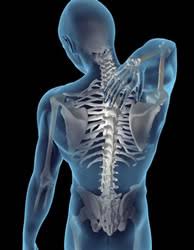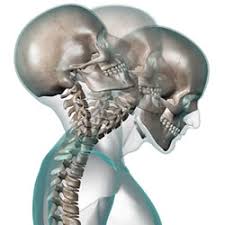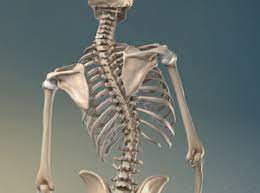

Bad neck posture, characterized by an exaggerated forward curvature of the upper spine and a prominent head tilt, can lead to severe discomfort and chronic pain.
As this condition worsens, it can limit mobility, disrupt daily activities, and increase the risk of further spinal issues.
Spinal fusion surgery has emerged as a potential solution for severe cases, but is it truly a miracle cure, or does it pose more risks than benefits?
This article delves into the pros and cons of using spinal fusion for correcting vulture neck posture, backed by the latest scientific research.
“Spinal Fusion for Fixing Bad Neck Posture” Article Contents:
- Understanding Vulture Neck Posture
- What is Spinal Fusion?
- How Spinal Fusion Could Help Vulture Neck Posture
- The Risks and Complications of Spinal Fusion
- Alternative Treatments for Vulture Neck
- FAQs on Spinal Fusion & Fixing Bad Neck Posture
- Conclusion: Is Spinal Fusion Worth the Gamble?
Understanding Bad Neck Posture
Bad neck posture, also known as cervical kyphosis, occurs when the natural curve of the neck is altered, causing the head to lean forward abnormally.
This condition is often a result of poor posture, trauma, or degenerative spinal diseases. Left untreated, it can lead to chronic pain, limited range of motion, and even breathing difficulties due to the altered alignment of the spine.
What is Spinal Fusion?
Spinal fusion, also referred to as spinal arthrodesis, is a surgical procedure where two or more vertebrae are permanently joined together using bone grafts, metal plates, or screws.
This process aims to eliminate movement between the fused vertebrae, providing stability to the affected spinal segment.
The procedure is commonly used to treat conditions such as scoliosis, degenerative disc disease, and severe cases of spinal deformities.
The surgery can be performed through different approaches, including anterior lumbar interbody fusion surgery and transforaminal lumbar interbody fusion surgery (TLIF).
Anterior approaches, such as anterior cervical disc fusion, are often used for upper spine issues, while posterior methods like TLIF are applied to the lower back.
The goal is to create a single, solid unit of the fused spinal vertebrae to correct deformities and alleviate pain.
How Spinal Fusion Could Help Vulture Neck Posture?
A quick look at how your nerd neck can be fixed via this invasive yet effective method:
Consideration for Surgery
- In cases of severe forward head posture, also known as vulture neck posture, where conservative treatments fail, spinal fusion surgery may be an option.
- This procedure involves fusing specific vertebrae in the cervical spine to restore the natural curve of the neck.
- By stabilizing the spine, spinal fusion helps reduce strain on muscles and ligaments, alleviate pain, and improve posture.
Effectiveness of Spinal Fusion Surgery
- According to a study published in the Journal of Neurosurgery: Spine, patients undergoing circumferential fusion for cervical kyphotic deformity experienced significant improvements in spinal alignment and neurological function.
- The study reported improvements in Nurick grades (which assess the severity of myelopathy) from an average of 3.2 preoperatively to 1.3 postoperatively.
- Additionally, the modified Japanese Orthopaedic Association (mJOA) scores improved from an average of 10 to 15 post-surgery, with a fusion success rate of 95% among patients (Journal of Neurosurgery: Spine, PubMed, 2024).
Factors Influencing Surgical Success
- The outcome of spinal fusion depends on factors such as the severity of spinal curvature, age, and overall health of the patient.
- A retrospective review published in the Journal of Spine Surgery highlighted that multi-level anterior cervical discectomy and fusion (ACDF) is effective but carries a risk of pseudarthrosis (non-union), occurring in 2.5% to 44% of cases (Journal of Spine Surgery, 2024).
- Some cases may require additional posterior fixation to improve fusion success rates.
Potential Risks and Complications
- While spinal fusion can provide significant pain relief and posture correction, it comes with certain risks.
- According to Mayo Clinic, potential complications include:
- Infection
- Nerve damage
- Reduced range of motion in the neck
- Increased stress on adjacent spinal segments, leading to adjacent segment disease (ASD) (Mayo Clinic, 2024).
Patient Consideration and Decision-Making
- Spinal fusion should be considered when non-surgical treatments such as physical therapy and posture correction fail to provide relief.
- A thorough consultation with a spine specialist is necessary to weigh the risks and benefits before proceeding with surgery.
- Long-term monitoring and rehabilitation are essential to ensure successful recovery and prevent complications.
Spinal fusion surgery is a viable treatment option for severe vulture neck posture when conservative methods fail.
While studies show high success rates in correcting spinal deformities, patient selection and post-surgical rehabilitation play a crucial role in achieving optimal outcomes.
Consulting with healthcare professionals and reviewing potential risks is essential before deciding on surgery.
The Risks and Complications of Spinal Fusion
Despite its potential benefits, spinal fusion is not without risks. One of the most common complications is pseudarthrosis, a condition where the bone graft fails to fuse properly, resulting in persistent pain and instability.
According to research published in Clinical Spine Surgery, pseudarthrosis is more likely to occur in smokers and patients with poor bone health, highlighting the importance of patient selection and preoperative planning.
Additionally, spinal fusion can lead to adjacent segment disease (ASD), where the vertebrae above or below the fused segment undergo accelerated degeneration due to the altered biomechanics of the spine.
This can necessitate further surgeries, increasing the overall risk and cost for the patient.
Moreover, fusion lumbar spine surgery and other forms of vertebrae fusion surgery can sometimes result in nerve damage, blood loss, and infections.
A study in The Spine Journal reported that these complications are more prevalent in complex procedures like fusion lumbar spine surgery and transforaminal lumbar interbody fusion (TLIF).
Alternative Treatments for Vulture Neck
Before opting for spinal fusion, patients should consider alternative treatments that may provide relief without the need for surgery.
Physical therapy is often the first line of defense, focusing on exercises that strengthen the neck and back muscles (such as rows) and improve posture.
Chiropractic care and ergonomic adjustments can also play a crucial role in managing vulture neck posture.
Minimally invasive procedures like cervical disc replacement or targeted nerve blocks can offer pain relief and improved mobility for some patients.
Additionally, advancements in regenerative medicine, such as stem cell therapy, are being explored as potential non-surgical options for spinal health.
FAQs on Spinal Fusion & Fixing Bad Neck Posture
Q1: What is spinal fusion, and how does it relate to correcting bad neck posture?
A1: Spinal fusion is a surgical procedure that involves joining two or more vertebrae in the spine to eliminate movement between them. This technique is primarily used to stabilize the spine, alleviate pain, and correct deformities. In the context of bad neck posture, spinal fusion may be considered when conservative treatments fail, and the misalignment is causing significant discomfort or functional limitations.
Q2: What are the potential benefits of spinal fusion for neck posture correction?
A2: Spinal fusion can offer several advantages for individuals with poor neck posture, including:
Pain Relief: By stabilizing the spine, the procedure can reduce or eliminate pain associated with misalignment.
Improved Posture: Correcting spinal deformities can lead to better alignment and a more natural posture.
Enhanced Functionality: Stabilizing the neck may improve mobility and the ability to perform daily activities without discomfort.
Q3: What are the risks and complications associated with spinal fusion for neck posture correction?
A3: While spinal fusion can be effective, it carries potential risks, such as:
Infection: Surgical site infections can occur, leading to prolonged recovery or additional treatments.
Nerve Damage: There’s a risk of injury to nerves during surgery, which can result in numbness, weakness, or paralysis.
Non-Union: In some cases, the vertebrae may not fuse properly, necessitating further surgical intervention.
Reduced Mobility: Fusion can limit the range of motion in the neck, potentially affecting daily activities.
Q4: How does smoking impact the success of spinal fusion surgery?
A4: Smoking can significantly impede the healing process after spinal fusion surgery. As per bestforwardheadposturefix.com, “Nicotine restricts blood flow, which is essential for bone healing, increasing the risk of non-union and other complications”. Patients are often advised to quit smoking well before and after the procedure to enhance the chances of a successful outcome.
Q5: Are there non-surgical alternatives to spinal fusion for improving neck posture?
A5: Yes, several non-surgical treatments can help improve neck posture, including:
Physical Therapy: Exercises designed to strengthen neck muscles and improve flexibility.
Ergonomic Adjustments: Modifying workstations and daily habits to promote better posture.
Chiropractic Care: Manual adjustments to correct spinal misalignments.
Postural Training: Education on maintaining proper posture throughout daily activities.
Q6: How can patients prepare for spinal fusion surgery to ensure the best possible outcome?
A6: Preparation for spinal fusion surgery involves several key steps:
Medical Evaluation: Undergoing a thorough assessment to ensure suitability for surgery.
Smoking Cessation: Quitting smoking to improve healing prospects.
Physical Conditioning: Engaging in exercises to strengthen muscles and improve overall health.
Education: Understanding the procedure, recovery process, and potential risks.
By addressing these factors, patients can enhance their chances of a successful surgery and recovery.
My Analysis: Is Spinal Fusion Worth the Gamble?
So, is spinal fusion a miracle cure or a dangerous gamble for fixing vulture neck posture?
The answer depends on the severity of the condition and the patient’s overall health.
While spinal fusion can offer significant benefits for those with severe deformities and chronic pain, it is not without its risks.
Complications like pseudarthrosis and adjacent segment disease can undermine the long-term success of the surgery, making it crucial for patients to weigh the pros and cons carefully.
In summary, spinal fusion should be considered only after exhausting all non-surgical options and when the potential benefits clearly outweigh the risks.
Consulting with a spine specialist and considering a second opinion are essential steps before making such a life-altering decision.
References:


